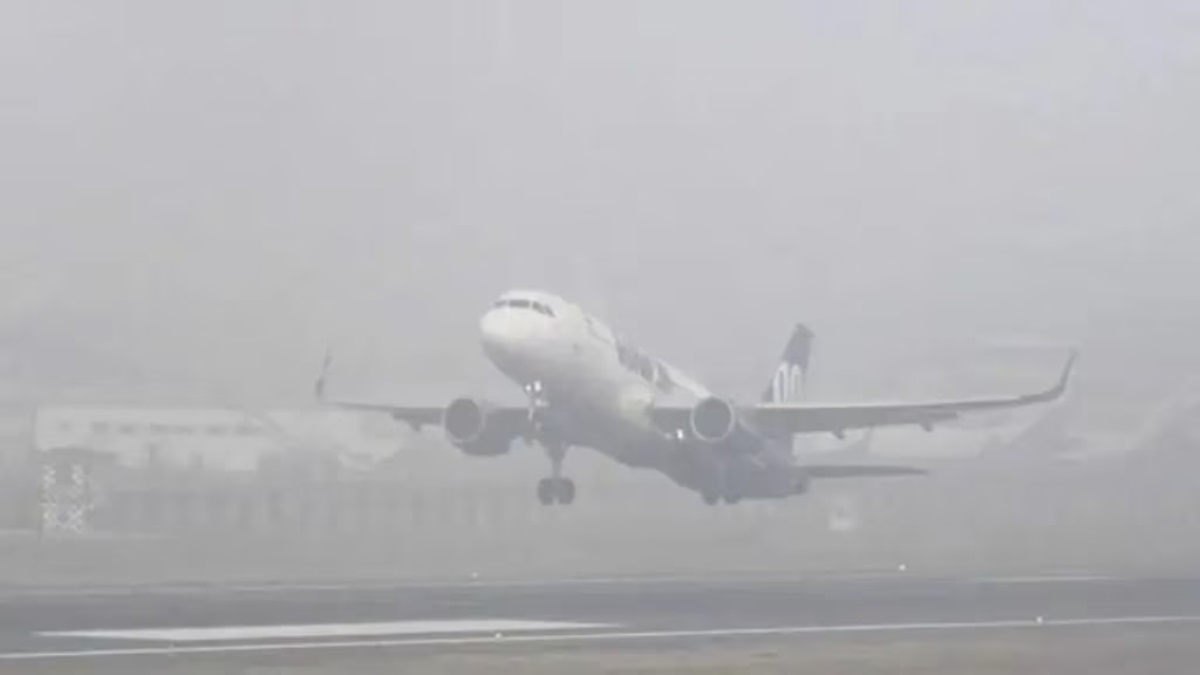 |
|
The alarming levels of air pollution in Delhi have once again brought the city's infrastructure to a standstill, impacting air travel significantly. On Monday, a total of 14 flights bound for Delhi's Indira Gandhi International Airport were diverted to Jaipur and Dehradun due to extremely low visibility caused by dense fog and severe air pollution. This disruption underscores the severe and widespread consequences of Delhi's persistent air quality crisis, highlighting the urgent need for comprehensive and effective solutions. The 'Captain Minima' operating procedures, which mandate minimum visibility standards for safe landing, were the reason behind these diversions. Pilots were unable to meet these requirements due to the hazardous air quality and resulting poor visibility. The incident showcases the cascading effects of air pollution, extending beyond respiratory health concerns to impact critical infrastructure like airports and the daily lives of countless individuals.
The escalating number of diversions, initially reported as 11 and later revised to 14, paints a concerning picture of the severity of the situation. The Delhi Airport issued an advisory early Monday morning, warning passengers of potential flight disruptions and advising them to contact their respective airlines for updates. This proactive communication, although necessary, underscores the significant inconvenience and uncertainty faced by travelers as a result of the air pollution. The advisory highlighted that although Low Visibility Procedures were in place at the airport, the prevailing conditions made safe landings impossible for many flights. This scenario not only inconveniences passengers but also disrupts the intricate network of air travel, potentially leading to cascading delays and disruptions across the country.
The gravity of the situation is further exacerbated by the fact that Delhi's air quality index (AQI) reached 'severe plus' levels on Sunday, triggering the implementation of the fourth stage of the Graded Response Action Plan (GRAP-IV). This stage involves stringent measures aimed at curbing pollution, such as restricting construction activities, implementing odd-even vehicle rationing, and shutting down schools. The AQI reading of 493 at 4 pm on Monday clearly indicates that these measures, while necessary, have not been entirely successful in mitigating the air pollution crisis. The persistent and severe levels of pollution highlight the complex interplay of factors contributing to the problem, including vehicular emissions, industrial activities, construction dust, and seasonal factors such as stubble burning in neighboring states. Addressing this multifaceted challenge requires a multi-pronged approach involving stricter regulations, technological advancements, and a change in societal behavior.
The incident serves as a stark reminder of the far-reaching consequences of unchecked air pollution. The economic impact alone, considering the cost of flight diversions, passenger inconvenience, and potential disruptions to business travel, is substantial. Beyond the immediate economic consequences, the long-term health implications for the residents of Delhi and the broader environmental consequences cannot be ignored. The severe pollution levels pose a serious threat to public health, contributing to respiratory illnesses, cardiovascular problems, and other health complications. The chronic exposure to polluted air can have devastating long-term effects on human health, affecting productivity and quality of life. The urgency of addressing this environmental crisis cannot be overstated. Effective and sustained efforts are needed to implement and enforce stringent pollution control measures, promote sustainable transportation alternatives, and encourage responsible industrial practices. Only through a holistic and coordinated approach can we hope to mitigate the devastating effects of air pollution on Delhi and ensure a healthier future for its citizens.
The flight diversions to Jaipur and Dehradun, while a temporary solution to ensure flight safety, are not sustainable in the long term. These alternative airports have their own capacities and limitations, and the continued diversion of flights will inevitably put a strain on their resources and infrastructure. Therefore, the focus should be on addressing the root causes of the air pollution in Delhi. This necessitates not only stricter regulations but also collaborative efforts involving various stakeholders, including government agencies, industries, and individuals. Public awareness campaigns to promote sustainable practices and reduce individual carbon footprints are equally crucial. The need for innovative technological solutions, such as improved air purification systems and cleaner energy sources, cannot be overemphasized. The ongoing crisis serves as a wake-up call; decisive and collaborative action is imperative to restore Delhi's air quality and safeguard the health and well-being of its population. The future of Delhi's skies, and the health of its citizens, depend on the effectiveness of the measures taken today.
Source: Delhi air pollution: 14 flights diverted to Jaipur, Dehradun due to low visibility
